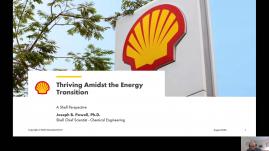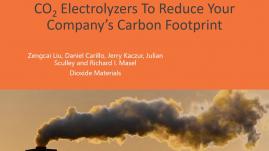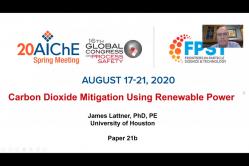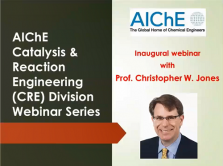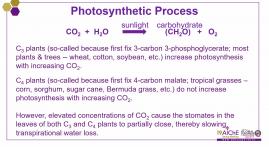Webinars & Conference Presentations
Our research shows Houston
Topic: Fluidized reactor technology /Carbon capture/CO2 utilization
Authors: Vangaever S. 1, Djokic M.R.1, Van Thielen J.2, Olver J.3, Theis G. 4,
Worldwide energy demand is projected to grow strongly in the coming decades, with most of the growth in developing countries. Even with unprecedented growth rates in the development of renewable energy technologies such as solar, wind and bioenergy, the world will continue to rely on...Read more
Authors: Van Geem Kevin M.1,*, Battin-Leclerc F.2, Bellos G.3, Heynderickx G.1, Buysschaert W.4, Cuenot B.5, Djokic M.R.1, Faravelli T.6, Theis G.7, Jakobi D.8, Lenain P.9, Munoz A.E
A current issue related to the production of petroleum from shale formations is the co-production of natural gas. In many cases, this co-produced gas is flared since the infrastructure is not in place to allow transport. The flaring operations produce carbon emissions and make no use...Read more
The waste generated from feed lots, dairy farms, meat processing, etc can be converted to a mixture of methane and carbon dioxide using anaerobic digestion. The methane can be converted to synthesis gas and subsequently converted to synthetic fuel using Fischer Tropsch technology.
...Read more
Coal remains the low-cost but high carbon power generation option around the globe. We have studied the design of a 500 MW pulverized-coal boiler under advanced ultra-supercritical (AUSC) oxy-coal firing with pure oxygen (no flue gas recirculation) for carbon capture and high efficiency. This...Read more
The abundant supply of natural gas provided by the fracking boom has dramatically changed the options for carbon dioxide management. It appears that much of the near-term regulatory need for carbon management will be met by switching natural gas for coal. However, long term...Read more
Liquid aminosilicone CO2 capture solvents have been developed that have the potential to significantly reduce the cost of carbon capture from pulverized coal power plants. Compared to aqueous amines, aminosilicones have the potential to reduce CO2 capture cost through...Read more
Regulatory Process Control of an Advanced Post-Combustion Amine Scrubbing System
Matthew S. Walters, Thomas F. Edgar, Gary T. Rochelle
McKetta
...Read moreThe United States Department of Energy (DOE) established seven Regional Carbon Sequestration Partnerships (RCSPs) in 2003. The Southeast Regional Carbon Sequestration Partnership (SECARB), whose lead organization is the Southern States Energy Board (SSEB), represents 13 States within the south...Read more
Scale-up of Amine-Containing Membranes for CO2 Capture and Separation
Witopo Salim1, Varun Vakharia1, Dongzhu Wu1, Yuanxin Chen1, Lin Zhao1, Yang Han1, and W.S. Winston Ho1,2...Read more
Carbon capture and storage (CCS) is a technically feasible technology that can be deployed to reduce CO2 emissions from power plants and industrial sources. In the long run, CCS is also expected to lower the cost of climate change mitigation. However, because first-of-a-kind (FOAK)...Read more
Accurate characterization of petrochemical feeds plays a crucial role in describing the different pyrolysis pathways and reactivity of the various isomer species. The isomer distribution is proved to have a critical role in characterizing product yields. Isomers with almost identical physical...Read more
CO2 is a major anthropogenic gas contributing to global warming. The growing concerns for climate change have encouraged research activities towards developing more-efficient processes for CO2 capture. Some of the excellent adsorbents like zeolites, carbon nanotube-based solid sorbents and...Read more
Design and performance of a novel reverse-flow fixed-bed reactor for chemical-looping combustion
Lu Han, Zhiquan Zhou, George M. Bollas
Abstract
...Read more
Today the world's energy economy is still based to a large extent on the abundance of fossil fuels. This has led to a rapid depletion of the easily accessible oil reserves resulting in continuously rising oil prices. Furthermore severe environmental problems caused...Read more
More than 60% of the total anthropogenic CO2 emissions in the U.S. are emitted from stationary sources such as power plants, iron and steel industries, cement plants, chemical plants, refineries, gas processing plants, petrochemicals, etc. While CO2...Read more


